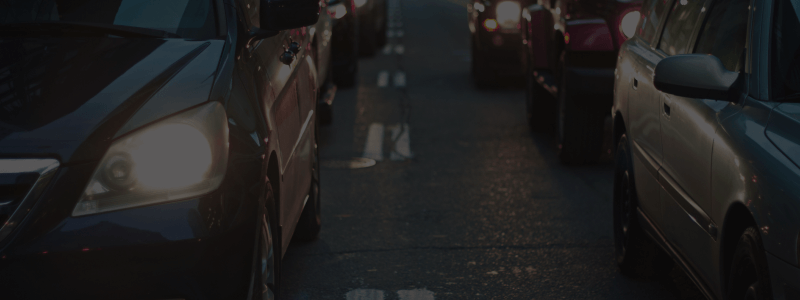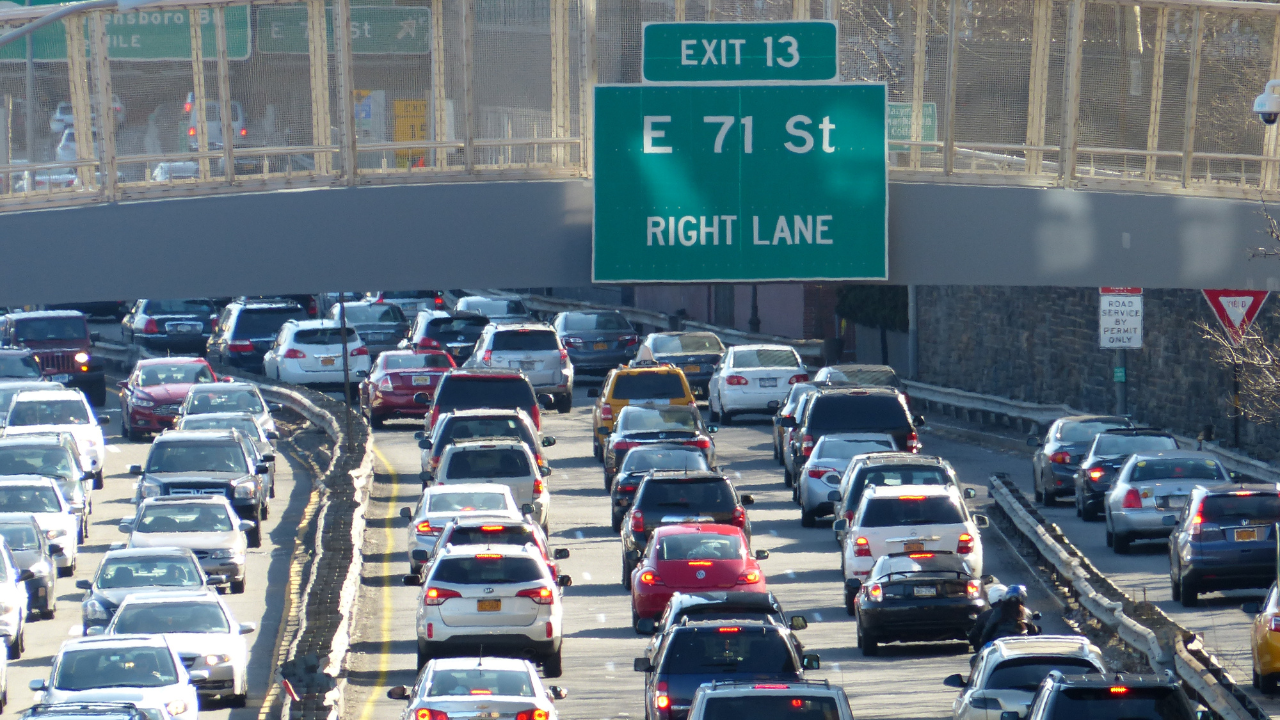Congestion pricing is a system that charges vehicles a fee to enter high-traffic areas. Its aim is to reduce congestion and generate revenue for public transit.
New York City is known for its busy streets, and it is estimated that more than 700,000 vehicles enter the Manhattan Central Business District every day, contributing to congestion. Starting last month, New York City has tried to combat this congestion by charging tolls to drivers entering some of Manhattan’s busiest areas.
New York City's new congestion pricing plan is also the most expensive in the country, as it can cost drivers up to $27 to drive through Manhattan. These high costs could significantly impact daily commutes, business trips, and personal budgets. Therefore, individuals who drive through Manhattan, whether for a one-time trip or as part of their weekly routine, should pay close attention to where these toll zones are and how the tolls will affect their travel expenses.
In this article, we go over what and where congestion pricing is, the consequences of failing to pay the tolls, available discounts, and how drivers can avoid congestion toll zones. Understanding these rules is essential to avoiding unnecessary fines and legal headaches, but if you do find yourself facing a ticket for evading a toll, an attorney can help. At Rosenblum Law, our attorneys are experienced in traffic ticket law and will work to help you fight your ticket.
What and Where is Congestion Pricing?
New York City’s new congestion pricing plan, known as the Congestion Relief Zone Toll, went into effect on January 5, 2025. The plan charges drivers a toll when they are driving on local streets or avenues below 60th Street. However, vehicles traveling exclusively on the FDR Drive, West Street/West Side Highway, or the Hugh L. Carey Tunnel connections to West Street are exempt from the toll. See the map below for the areas that the congestion pricing covers.
Drivers of passenger vehicles or motorcycles are charged the congestion toll once per day, while truck and bus drivers are charged every time they enter a congestion pricing zone.
The main goal of congestion pricing city is to reduce traffic and vehicle congestion in NYC, but there are other goals that the city intends to accomplish as well:
- Reduce vehicle travel time
- Reduce emissions and create cleaner air
- Increase road safety
- Increase revenue to fund public transit improvements
Costs of NYC’s Congestion Pricing
Congestion pricing tolls vary, as the cost depends on the type of vehicle and the time of day. Drivers will be charged a more expensive toll during peak hours, which is from 5 a.m. to 9 p.m. on weekdays and 9 a.m. to 9 p.m. on weekends. The overnight pricing is 75% less expensive.
See the table below for more information on toll pricing. Drivers can also click here to access the NYC MTA’s Toll Rate Calculator.
| Type of Vehicle | Peak | Overnight |
| Passenger and small commercial vehicles (Sedans, SUVs, pick-up trucks, and small vans) Charged once daily | $9 | $2.25 |
| Motorcycles Charged once daily | $4.50 | $1.05 |
| Trucks and buses | $14.40 - $21.60 | $3.60 - $5.40 |
The easiest way to pay the toll is by using an E-ZPass. Drivers who enter congestion pricing zones without an E-ZPass will be charged a more expensive rate, and the bill will be mailed to the home address registered with their vehicle.
The Consequences of Failing to Pay the Congestion Relief Zone Toll
Failing to pay a toll in NYC results in a fine based on how far it is from the date the bill was issued:
- Bills unpaid after 30 days of the bill date incur $5 late fee
- Bills unpaid after 60 days of the bill date incur $50 late fee for each unpaid toll
Tolls and/or fees that remain unpaid may result in further consequences, such as the driver’s vehicle registration being suspended or a civil judgment if the case goes to court, which is the final decision made and usually involves the losing party paying a sum of money to the winning party.
How Can Drivers Avoid Congestion Pricing?
To avoid paying New York City’s congestion pricing tolls, drivers should plan their routes carefully and explore alternative transportation options.
The most effective way to bypass the charges is to use public transit, which remains the most cost-efficient option for commuting into Manhattan’s central business district. Manhattan offers subway service, buses, and trains, allowing individuals to get around efficiently without a vehicle. For example, the subway service is only $2.90, and it is one of the world’s longest subway systems, with 472 stations across the five boroughs of Manhattan.
For those who prefer to drive, drivers should consider adjusting their route to avoid congestion pricing zone. Carpooling, biking, or using park-and-ride options outside the congestion pricing zone can also reduce costs.

Need help with your traffic ticket?
Call Now - We've Fought Over 50,000 Traffic Ticket Cases
Quick, free, and no obligation.
Exemptions and Discounts from NYC’s Congestion Pricing
New York City offers discounts on congestion pricing fees for low-income residents. Drivers eligible for the Low-Income Discount Plan (LIDP) will receive a 50% discount off the Congestion Relief Zone toll. Residents in the Congestion Relief Zone whose gross income is under $60,000 may also qualify for a tax credit that equals the amount of tolls they have paid.
There are also a few exemptions from the Congestion Relief Zone toll that drivers may be eligible for, including:
- The Individual Disability Exemption Plan: Available for individuals with a registered disability that prevents them from using public transportation or for registered caregivers of those with disabilities
- The Organizational Disability Exemption Plan: Available for organizational entities that transport people with disabilities
- The Emergency Vehicle Exemption Plan: Available for drivers of emergency vehicles, such as ambulances, police vehicles, and blood delivery vehicles
- The Commuter Bus Exemption Plan: Available for bus drivers, including commuter and transit buses, commuter vans, and school buses
- The Specialized Government-Owned Vehicle Exemption Plan: Available for drivers who drive government-owned vehicles, such as garbage trucks, snow plows, or pavers
Those who think they are eligible for one of these discounts or exemption programs should click on the hyperlink above to learn how to apply.
FAQs
Which areas of NYC are affected by the congestion pricing zone?
The Congestion Relief Zone Toll charges drivers a toll on local streets and avenues that are below 60th Street. However, vehicles traveling exclusively on FDR Drive or West Street/West Side Highway, or in the Hugh L. Carey Tunnel connections to West Street, are exempt from the toll.
When does the congestion pricing toll apply, and are there specific hours of operation?
The congestion pricing toll varies based on the time of day and is higher during peak driving hours. Peak hours are from 5 AM to 9 AM on weekdays and 9 AM to 9 PM on weekends. Overnight pricing is 75% less expensive than peak pricing.
How much will drivers need to pay to enter the congestion zone?
During peak hours, passenger and small commercial vehicles, including sedans, SUVs, pickup trucks, and small vans, are charged a $9 congestion fee once per day, while motorcycles pay $4.50. Overnight rates drop significantly, with passenger vehicles charged $2.25 and motorcycles $1.05. Trucks and buses face higher tolls, ranging from $14.40 to $21.60 during peak hours and $3.60 to $5.40 overnight.
Can I dispute a congestion pricing ticket if I believe it was issued in error?
Yes, if you are evading a toll because you believe you were charged a toll in error or overcharged, you can dispute the ticket. At Rosenblum Law, one of our experienced traffic ticket attorneys can help you understand the ticket and effectively fight it.
Will congestion pricing impact rideshare or taxi services?
Yes, the program affects rideshare and taxi services.
- Rideshare Services (Uber, Lyft, etc.): Passengers will incur an additional $1.50 per ride when entering the congestion zone.
- Taxis, Green Cabs, and Black Cars: A $0.75 surcharge applies per trip into the zone.




